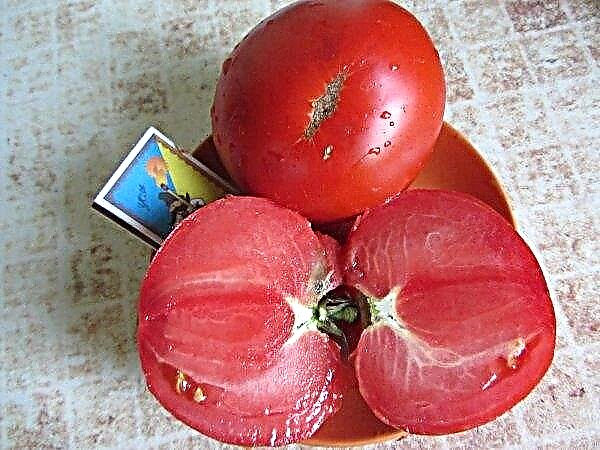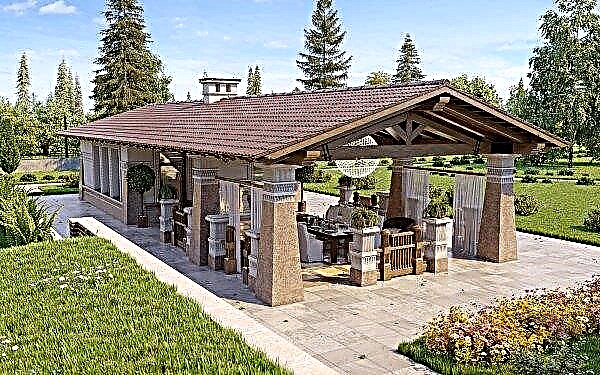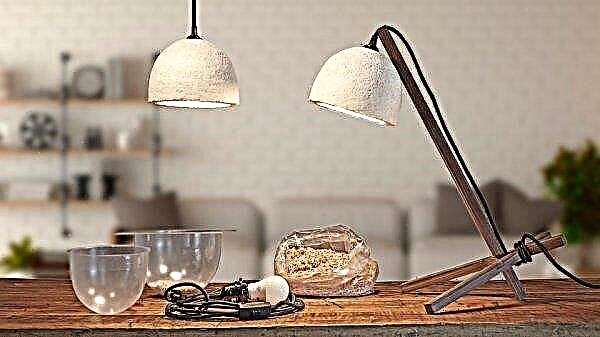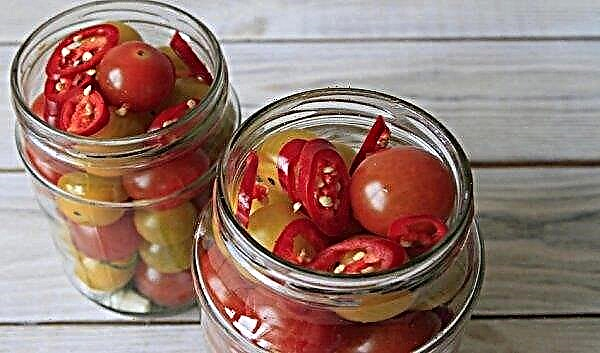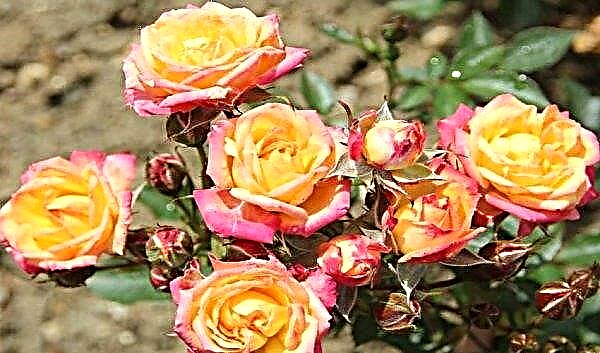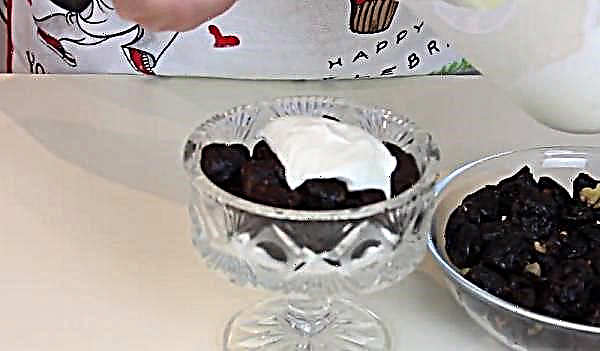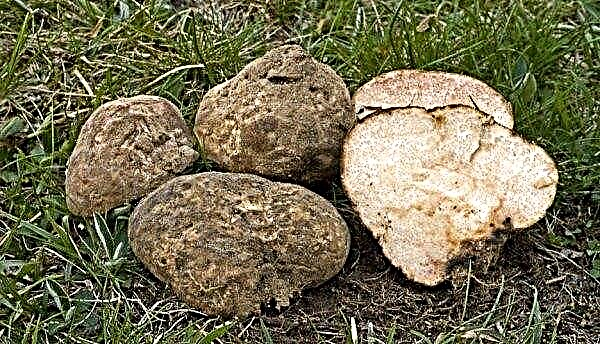The use of landscape design elements has long been the main way to ennoble private adjoining territories, because with the help of properly selected plants you can create whole decorative zones. One of such zones is a mixborder, but each gardener can decide which style to choose by himself, having previously familiarized himself with possible options for such landscaping.
What is a mixborder
In the literal translation from English, the mixborder is “mixed border” or “mixed border”, but in practice, such an element of landscape design is a complex multi-level and multi-row flower garden, all plants of which are selected in such a way as to ensure continuous flowering of the selected area from early spring to late autumn. Typically, mixborders include perennial ornamental plants, woody and herbaceous varieties, mainly with multiple flowering for one season. Often these cultures are complemented by one or two year old plants without flowers, but with highly decorative foliage.
The average width of mixborders should exceed the height of the tallest plant in the planting by at least 1.5–2 times - this is one of the main rules for their organization. Observance of clear symmetry or ordering of cultures in this case is completely optional.
Did you know? The first mixborders (free-style mini-gardens) appeared in England as far back as the 17th century, as a budget alternative to the lush, luxurious gardens of the aristocratic nobility. They fit perfectly into the small house sections of ordinary citizens and did not require the departure of specially hired workers.
Varieties and styles
After decades of using mixborders, individual types of such stands have been formed on personal plots, the most popular of which are deservedly considered the following.
English
The most “calm” style, characterized by the restraint of the color palette characteristic of the British. You will not find any bright and magnificent colors in such a mixborder, because preference is always given to the classic green, pale pink and white tones of neat plants, often with elongated leaves. Often, in English mixborders, you can see classic roses and daisies.

Lugovoi
Like the previous version, meadow - not very bright, but quite expressive style, and this group planting includes cereals, poppies, flax, chamomiles and other plants characteristic of meadows in the natural environment of their growth. I must say that it is cereals that occupy a key place in such compositions.

Shadow
If you already had to choose plants for your garden, then you probably managed to notice how many among them are shade-tolerant specimens that prefer permanently moistened areas of the territory. Most of them have wide leaves, but the flowers are either completely absent (like ferns) or weakly expressed (for example, hoofed grass). Of flower crops in the shadow mixborders often planted buzulniki, aquilegia, hosts.
Plants planted in a shadow flower garden can be characterized by the same height and even serve as groundcover elements of landscape design, for which often used are hosts, dumplings, medunits and incense. However, shade-tolerant mixborders with sparse vegetation are much more common in areas: for example, in the background you can plant tall, broad-leaved or narrow-leaved crops (daylilies, buzulniki, phloxes and peonies), the middle part of the composition should be occupied by large hosts, bathers, bells and astilbe, and the foreground should preferably be reserved for primroses, cocks, small-bulb crops, creeping tenacity and lilies of the valley.

Rustic
Rustic style mixborders involves planting a large number of plants with large green leaves. Of the flowers, sunflowers, mallow, dahlias and lupins are commonly used. From the berry shrubs in the background, viburnum, currants and other fruit bushes or small dwarf trees that can create a real rustic comfort in the designated area will look good.

Garden
This option is perfect if there is no place for a large flower mixborder in the selected area, but at the same time you want to ennoble the house area. As suitable for planting vegetation, in this case, cabbage, legumes, carrots, beets and parsley are perfectMoreover, when placing them, it is also worth observing the principle of “dimensional planting”: the highest crops are planted in the background, and low greens are sown in front.

Shrubby
Shrub mixborders combine plants of different heights, widths and colors of flowers. Sometimes flower cultures are included here, providing bright, clearly visible spots that stand out clearly against the background of green foliage. It is best to choose low shrubs that are easy to cut for planting. Spreading and tall trees are not the best solution, since they will cover most of the mixborder with themselves and it is unlikely that they will achieve maximum compactness and decorativeness of the composition.
Did you know? The art of creating park and garden decorative plots has been known since time immemorial. For example, in the XX – VIII century BC. e., the main elements of landscape design in ancient Greece were straight garden paths and alleys, supplemented by columns, vases and sculptures located along them.
Shrub mixborders will look great next to fences, creating the effect of an attractive evergreen hedge. You can place mixborders along the path leading to the house to close this area from prying neighboring eyes. A small shrub mixborder will be appropriate in front of the terrace of the house, especially since in addition to “stationary” plants, you can use potted flower crops in the composition. You can also plant bushes between the parking lot and the garden, so that the plants cover the transport and give the impression of a constantly blooming garden. No less stylish solution would be a combination of shrubby mixborders with rockerythat will help to create a romantic atmosphere of the natural landscape.

Coniferous
When creating vertical and horizontal lines from coniferous trees and shrubs in mixborders, their timely haircut significantly enhances the contrast of vegetation in shape, helping such a composition to maintain high decorativeness throughout the year. Of course tall spruce and pine trees will not always be the best solution to fill such a mixborder, but small specimens of conifers (for example, decorative varieties of fir, juniper, spruce or thuja) will cope with the task of landscaping as well as possible. To ensure the maximum rhythm of the coniferous composition, all elements used in it should be repeated 3-5 times, and so that the coniferous mixborder does not turn out to be very boring and of the same type, planted conifers are often supplemented with flowering or heather perennials.

Suitable plants
In each individual case, plants for filling mixborders are selected individually, taking into account the time of their flowering, height and width of adult specimens. It will not be possible to create a productive mixborder if the crops planted in it impose different requirements on the composition of the soil, the conditions of humidity and lighting of the site.
This should not be a collection of plants, selected only taking into account the wishes of the gardener, because in order to achieve the goals of landscape design, all cultures must interact well with each other, "getting along" on one limited territory. The choice of options is wide enough, so you can choose both perennial or annual varieties, as well as coniferous plants or shrubs, each of the options has its own, noteworthy instances.
Perennial
A perennial mixborder may have the most different, sometimes very unusual shape: elongated, rounded, straight or triangular. Flowerbeds of arbitrary shapes, in which crops with continuous flowering are planted, also look effectively. To create the central, “skeletal” part of the mixborder, the most successful solution would be to use willow, viburnum, elderberry, magnolia, jasmine, hibiscus, weeping larch, fir, thuja and decorative pine trees planted at a distance of at least 1 m from each other (be sure to consider the tendency of trees to grow).

Middle tier of a multi-year mixborder can be organized using phlox, roses, asters, delphiniums, which bright flowers can be diluted with the help of majestic geranium, juniper, cineraria with its highly visible silver leaves and heicher, known for their burgundy leaf plates.
For the foreground of perennial mixborders, bells, hybrid varieties of carnations, irises and lilies will be appropriate, and for a more elegant area next to perennial flowering crops, it is worth planting no less colorful motley annuals.
Important! When arranging mixed flower beds, the most complete combination of possible shades will be an important condition. The most successful options for the spring period will be white and blue tones (for example, daisies and delphiniums), and in the summer you can enjoy pink phlox or bright yellow-red gerberas and asters.
Annuals
The mixborder from annual plants provides for their multi-row planting, using for planting various species specimens of crops (they not only guarantee an attractive type of flowerbed at different times of the year, but also allow the use of plants of different heights). The list of annuals that open their buds in the spring (March to May) is quite extensive, but the most popular are petunia, marigolds, pelargonium and evergreen begonia.
In addition, to maintain the overall decorative effect of the mixborder, it is possible to plant deciduous annual crops in it, for example:
- crested chlorophytum;
- seaside cineraria;
- hybrid coleus;
- kohiyu;
- golden feverfew.

When choosing plants for summer decoration of an organized mixborder, the most successful option will be zinnia, tunbergia, levka, tagetes, snapdragon, calendula, scallop celosia, dyeing coreopsis, beautiful guillardia, annual sunflower. All these flowers have yellow coloring leaves, and if the gardener likes it more blue buds, then you should give preference to the Mexican Ageratum, blue cornflower, three-colored bindweed, Russell eustoma, plantain bruise. From plants blooming red flowers, the most relevant varieties are stock roses, balsam, umbrella calendrinia, scallop celosia, salvia, cosmea, nasturtium. Also do not forget about plants with restrained white color, which in the summer can dilute the bright colors of the above colors. Successful options from this group will be fragrant dope, hybrid small-lettered, umbrella Iberis.
In order for summer crops to please you with their flowering for as long as possible, it is worthwhile to remove faded buds from them from time to time, which helps to maintain a long decorative flower bed and re-bloom individual crops.
Conifers
The abundance of coniferous plants allows you to choose for such mixborders a variety of stylistic options for decorating decorative zones, but only with a thoughtful combination of different options will you be able to achieve the desired decorative result.
Choosing conifers for a mixborder flower bed, it is advisable to pay attention to the following crops:
- Fastigiata pine, which is perfect for landscaping the garden in the case when you need to add a narrow vertical to the plantations (multi-sized pine trees cope with this task as well as possible);
- Pumilio pine, more reminiscent of a bush, rather than a familiar pine tree;
- Mugus pine - an alpine shrub tree that does not need a shaping haircut;
- Western thuja, which is great for landing in the central part of the composition;
- juniper (tall specimens are planted as a background for smaller crops, medium varietal variations can be placed in the central part of the planting, and ground cover plants will perfectly cover empty spaces between shrubs);
- dwarf spruce trees, which, depending on their size, can also occupy a variety of places in decorative compositions.

So that coniferous plants do not look the same and uninteresting, in addition to the listed cultures, it is useful to plant rhododendrons, derens, barberries, horizontal cotoneaster and even flowering plants like primrose, tulips and daisies. The latter are located on the edge of the most noticeable, front of the mixborder.
Shrubs
Despite the wide popularity of coniferous and perennial shrubs for mixborders, flowering crops and varieties with decorative leaves are much more often used in the design of the territory. The advantage is compact, plentifully flowering bushes with a long flowering period.. It is to these gardeners that include spirea, hydrangea, tree peonies, barberry and many varieties of rhododendron.
In addition to them, the shrub mixborder can include mahonia, iberis, boxwood, and areas free from shrubs are additionally formed by ground cover phloxes and stonecrops. In mixed plantings between large, sprawling plants, primrose, armeria daisies and other flower crops are planted.

Creating and designing a mixborder with your own hands
Having decided on a specific style of creating a mixborder, it remains only to prepare everything you need and you can proceed to the direct execution of work. Of course, an important issue in organizing such an activity will be the choice of the most suitable place for the flowerbed and the consideration of some features of the placement of plants on it.
Choosing a place to land
The selection of a site for designing a mixborder should be made taking into account the needs of specific plants prepared for the decoration of the territory, but in any case it is better to avoid waterlogged and places under the scorching sun. This also applies to territories located in complete shade, since the complete lack of sunlight is unlikely to please the bushes, or even less flowers. The optimal solution in this case would be a platform with diffused sunlight and protection of plants from the scorching dining sun. This can be a site near the walls of the house, a small slope, the edge of the terrace or an area along the paths.
Important! When forming a mixborder along the facade of buildings, be sure to consider the height of the windows so that the upper tier of the plants does not prevent sunlight from entering the building.
It is better to place intermittent mixborders around the perimeter of the territoryso that crops do not obscure each other. Decorative zones along the paths form approximately 0.5 m from them, trying to predict the growth of the bush and prevent obstacles to the movement of people.And of course, choosing a place to place the mixborder, try to keep the basic idea of the general landscape design of the territoryso that the flower garden does not become an unattractive spot against a background of other vegetation.

How to place plants
In addition to choosing the site suitable for the mixborder, it is important to consider some basic rules for placing plants on it.
The list of key recommendations in this case includes the following:
- Whatever form you decide to give your structure, the edges of such a bed should always be clearly definedwhat can be achieved with stones, tiles, logs or undersized crops.
- Within one mixborder try to use plants with approximately the same requirements to the intensity of moistening, illuminated area and fertilizer. In the future, such a composition will be much easier to care for.
- Do not try to use a lot of different cultures in a small area, optimal thickening - no more than three plants per 1 m² mixborder. Too high density of shrubs and flowers may well lead to a limitation of their growth and impaired flowering, not to mention the increased risk of developing fungal ailments.
- Keep moderation with straight lines., because the more natural and elegant the flower garden looks, the more attractive it is.
- You should not use several cultures with a well-developed and powerful root system in one mixborder at once. With a lack of moisture and nutrients in the soil, they may well spoil the entire composition, taking away from the rest of the vegetation everything it needs for normal growth and development.
- Adhere to the principles of layering when planting plants: tall bushes and trees should not obscure dwarf crops and flowers.
- The height of the largest planting plants should not exceed half the distance from the mixborder to the main observation point, otherwise the upper tier of the composition will simply be lost against the general background of the infield.
- Selecting crops for landing in mixborders, give preference to varieties with different flowering periodsso that after the buds fall on some plants, others take over the performance of decorative functions. Thus, year-round support for the aesthetic appearance of the mixborder can be achieved.
And of course, do not forget about observing the requirements for crop rotation, therefore, if any plants sank and died in the selected area during the past season, then you should not plant them here this year either.
How to care
It's no secret that even the most unpretentious (according to reviews) plants require some attention, therefore, when organizing a mixborder, you need to be prepared to provide them with at least minimal care.
The following actions can be included in such a “minimum” program:
- Regular watering, taking into account the moisture content of planted crops (the average frequency of liquid introduction is 3–6 times a season, but at the same time, weather conditions and the amount of natural precipitation must be taken into account). For irrigation, it is better to choose the water protected and heated in the sun, without chlorine impurities.
- Periodic weeding of the mixborder zone with the removal of weeds, which not only violate the decorative composition, but can also cause limited growth or diseases of planted crops. If necessary, it is possible to mulch the near-trunk zone of shrubs, but only if the plant is supportive of such a procedure.
- Regular planting top dressingmainly using complex mineral compositions. The optimal frequency of nutrient intake is once every 3-4 weeks, starting in early spring and continuing until mid-autumn. In preparation for the winter season, it is useful to fertilize the flower garden with phosphorus-potassium compounds.
- Pruning of dry inflorescences, diseased and damaged branches, as well as improperly growing instances. To maintain the high decorativeness of the mixborder, a timely shaping haircut, limiting the growth of bushes and trees, will not be superfluous.
- Regular inspection of crops for disease-infected or pest-affected shoots, and if there are any, you will have to remove the damaged parts, and treat the remaining plant with fungicidal and insecticidal preparations in several doses (the minimum interval between sprayings is 2 weeks).
- In addition to the above requirements, we cannot but recall the need to organize winter shelter for some plants with low frost resistance. The list of standard activities for winter preparation includes hilling bushes, water-charging irrigation and fertilizing flowering plants with phosphorus-potassium compounds. For young specimens or varieties with low frost resistance, additional cover may be required with non-woven frost protection material.
Video: Basic principles for choosing colors for mixborders
Knowing what a mixborder is, guided by the styles of its design and the proper selection of the most profitable vegetation, even a small area can be decorated with both large and medium-sized or ground cover crops. Providing proper care to the plants, they will always delight you with attractive flowering and high decorative appearance, often for many years.

